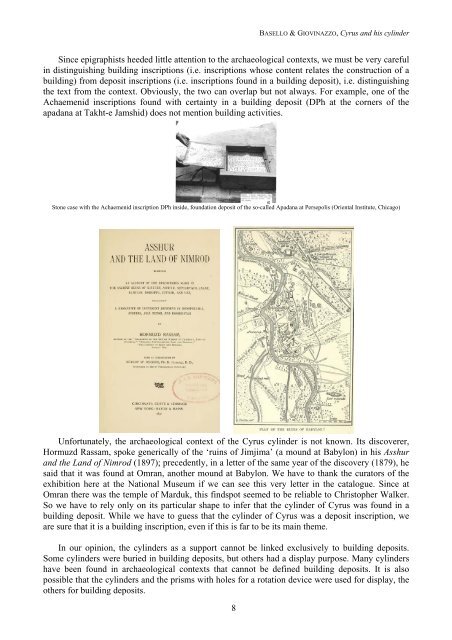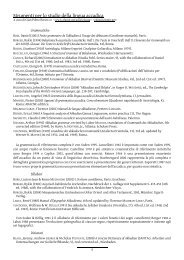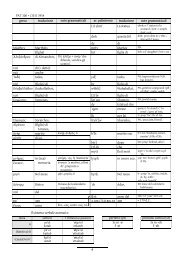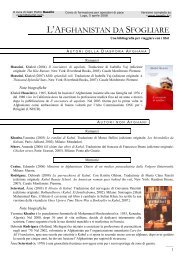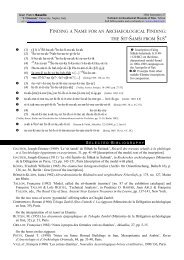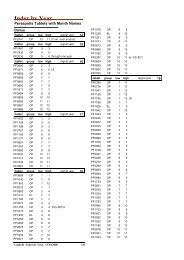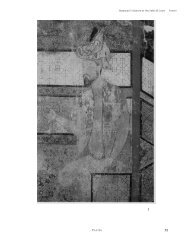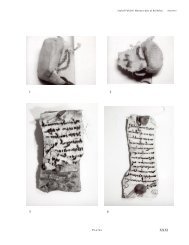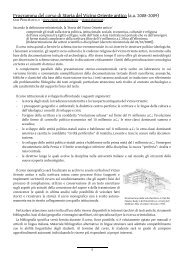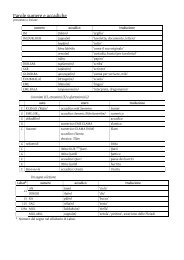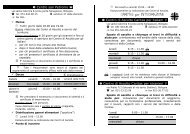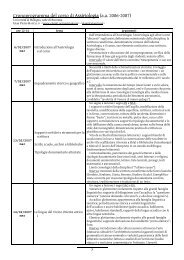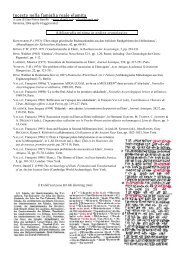Cyrus and his Cylinder: The King and his Mirror - Elam.net
Cyrus and his Cylinder: The King and his Mirror - Elam.net
Cyrus and his Cylinder: The King and his Mirror - Elam.net
You also want an ePaper? Increase the reach of your titles
YUMPU automatically turns print PDFs into web optimized ePapers that Google loves.
BASELLO & GIOVINAZZO, <strong>Cyrus</strong> <strong>and</strong> <strong>his</strong> cylinder<br />
Since epigrap<strong>his</strong>ts heeded little attention to the archaeological contexts, we must be very careful<br />
in distinguishing building inscriptions (i.e. inscriptions whose content relates the construction of a<br />
building) from deposit inscriptions (i.e. inscriptions found in a building deposit), i.e. distinguishing<br />
the text from the context. Obviously, the two can overlap but not always. For example, one of the<br />
Achaemenid inscriptions found with certainty in a building deposit (DPh at the corners of the<br />
apadana at Takht-e Jamshid) does not mention building activities.<br />
Stone case with the Achaemenid inscription DPh inside, foundation deposit of the so-called Apadana at Persepolis (Oriental Institute, Chicago)<br />
Unfortunately, the archaeological context of the <strong>Cyrus</strong> cylinder is not known. Its discoverer,<br />
Hormuzd Rassam, spoke generically of the ‘ruins of Jimjima’ (a mound at Babylon) in <strong>his</strong> Asshur<br />
<strong>and</strong> the L<strong>and</strong> of Nimrod (1897); precedently, in a letter of the same year of the discovery (1879), he<br />
said that it was found at Omran, another mound at Babylon. We have to thank the curators of the<br />
exhibition here at the National Museum if we can see t<strong>his</strong> very letter in the catalogue. Since at<br />
Omran there was the temple of Marduk, t<strong>his</strong> findspot seemed to be reliable to Christopher Walker.<br />
So we have to rely only on its particular shape to infer that the cylinder of <strong>Cyrus</strong> was found in a<br />
building deposit. While we have to guess that the cylinder of <strong>Cyrus</strong> was a deposit inscription, we<br />
are sure that it is a building inscription, even if t<strong>his</strong> is far to be its main theme.<br />
In our opinion, the cylinders as a support cannot be linked exclusively to building deposits.<br />
Some cylinders were buried in building deposits, but others had a display purpose. Many cylinders<br />
have been found in archaeological contexts that cannot be defined building deposits. It is also<br />
possible that the cylinders <strong>and</strong> the prisms with holes for a rotation device were used for display, the<br />
others for building deposits.<br />
8


